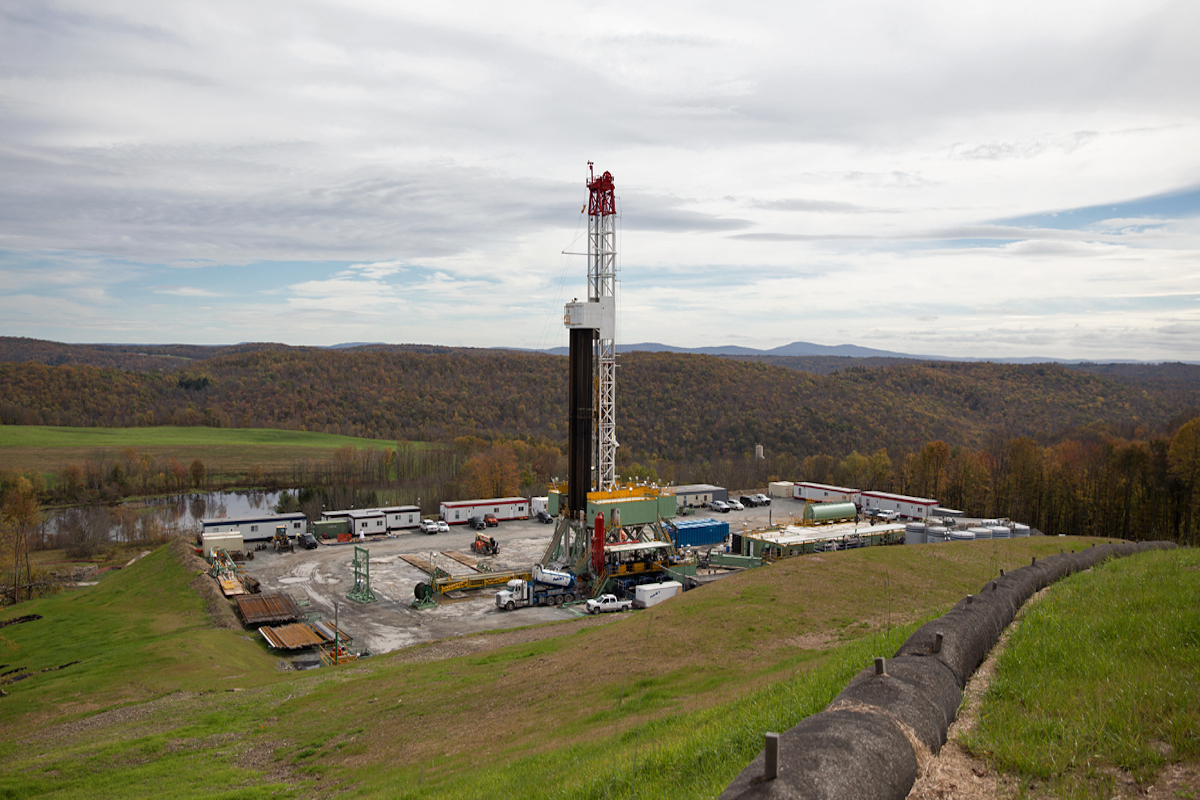On Wednesday, the Department of Environmental Protection sent a re-write of Pennsylvania’s oil and gas regulations to a state board. It’s one of the last hurdles before the state implements what could be the biggest changes to these regulations since the 1980s.
The changes were mandated by 2012’s Act 13—signed by then-Gov. Tom Corbett—and have taken nearly four years to complete.
Scott Perry, the DEP’s Deputy Secretary for Oil and Gas Management, said the package of rules was more comprehensive than others the state has implemented since the fracking boom began a decade ago. Those include 2010 limits on the discharge of salts from oil and gas wastewater into rivers and streams, and the 2011 revisions to the state’s well construction standards.
“Those rules are incredibly important, but they certainly do not have the same breadth of scope of the revisions we’ve made,” Perry says.
LISTEN: “Inside Pennsylvania’s New Oil and Gas Regulations”
Among the changes is a requirement for companies to do more pre-drill testing to look for old abandoned wells or underground faults that could allow pollution to migrate when a well is drilled. The rules also ban on-site storage pits for oil and gas wastewater. Drillers would have to use tanks and centralized impoundments, which require tougher standards.
Many of the regulations set requirements that some drillers are already meeting. But John Walliser, a member of the Pennsylvania Environmental Council who sits on a state board that reviewed the new rules, says they’re needed.
“You need that baseline to ensure someone’s complying with the same set of rules and everyone’s undertaking the same set of precautions,” Walliser says.
The industry says the new rules will be so expensive they will cost jobs. In a statement, Marcellus Shale Coalition president Dave Spigelmyer said the cost of compliance could rise to $2 billion, “without providing meaningful environmental benefits.”
Similarly, Rob Boulware, spokesman for Seneca Resources, questioned whether the “substantial” cost of compliance would be worth “the benefits, if any, that will be derived” from the new regulations.
The DEP disagrees with these assessments. It released compliance cost estimates, which put the initial costs between $41 and $73 million, and yearly costs at $5 to $31 million.
Industry analysts note that a recent drilling slowdown likely has more to do with high supply and low gas prices than regulation. The region has a glut of natural gas thanks to the fracking boom. The number of rigs operating today is about a quarter of what it was four years ago.
The finalized rule now goes to the Environmental Quality Board, which will have a chance to accept or reject them. After that, it goes to the state’s Independent Regulatory Review Commission. The new rule could be implemented this summer.

